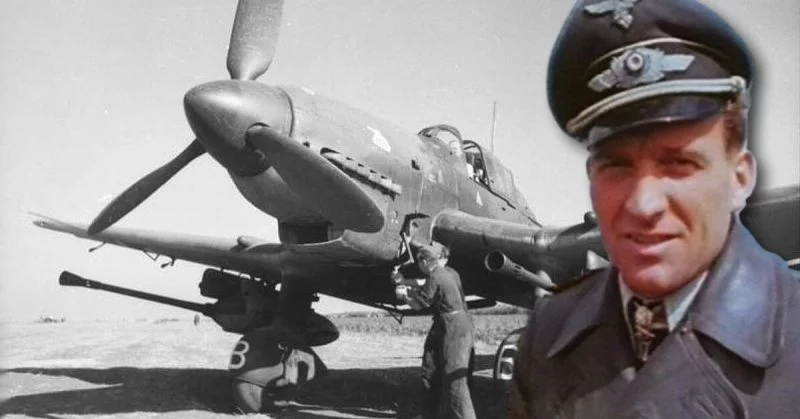The most decorated combat pilot of all time was not, as you might expect, a fighter pilot, though he did shoot down nine enemy aircraft. Hans-Ulrich Rudel flew Stukas on the eastern front during World War II. However, his courage, tenacity and resilience in the face of horrendous wounds brought him the highest awards in Nazi Germany.
Like most military aviator trainees, Rudel dreamed of becoming a fighter pilot. The son of a Lutheran minister, Rudel was an enthusiastic Nazi who didn’t drink alcohol or smoke and was fanatical about physical fitness.
He went through basic training in the newly created German Luftwaffe in the late 1930s and as the date of passing out approached, all the trainees in his year began to wonder to which arm of the air force they would be posted.
Most hoped for an assignment to fighters but, as the time approached, a rumor swept the school that all the trainees from that year were to be assigned to heavy bomber squadrons.
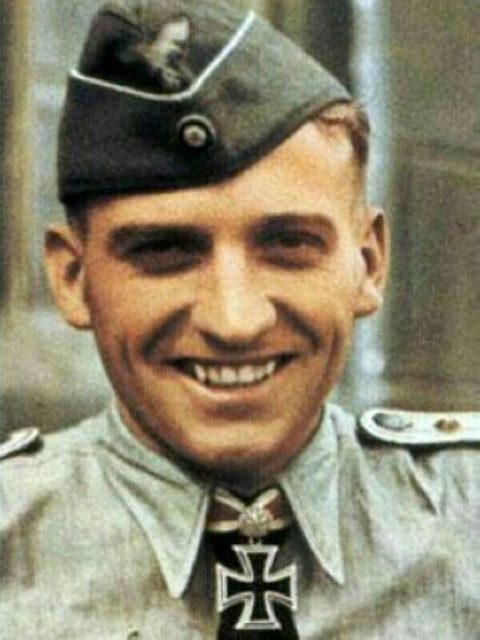
This didn’t appeal to Rudel at all so, when he heard that volunteers were wanted to join Stuka units, he put his name forward. His reasoning was that, while he didn’t really want to be a dive bomber pilot, at least that would be better than flying a heavy bomber.
In the end, almost all the pilots in that year were assigned to fighter squadrons–too late for Rudel who had already been accepted for Stuka training.
Rudel was trained to fly the Junkers Ju-87. This single engine, fixed-undercarriage aircraft was generally known as the Stuka, derived from the term Sturzkampfflugzeug meaning “Dive Bomber.”
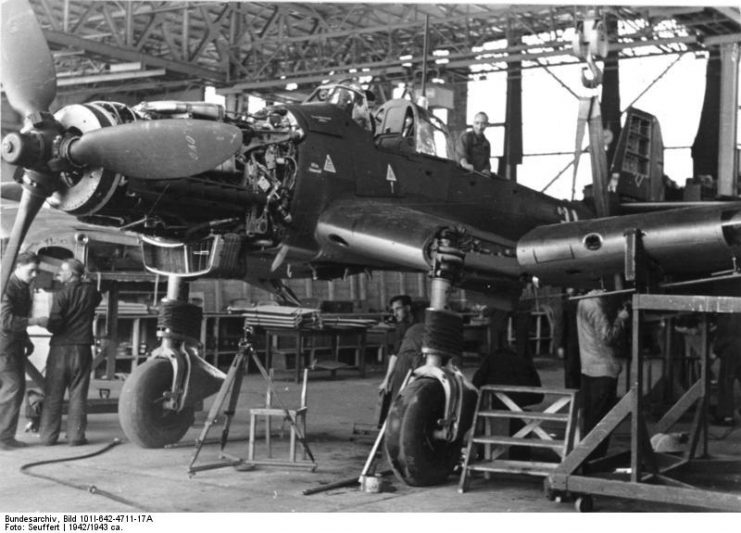
The Stuka was slow compared to the fighters of the day – the B model on which Rudel was trained had a Jumo 211Da engine which gave a top speed of just two hundred miles per hour. However, the Ju-87 was a stable and reliable aircraft which could carry up to 1,500 lbs of bombs on external racks.
After a short period flying with a reconnaissance unit during the invasion of Poland, Rudel joined a front line unit, Sturzkampfgeschwader (Dive Bomber Squadron) 2 “Immelmann” in June 1941, just in time to take part in Operation Barbarossa, the German invasion of the Soviet Union.
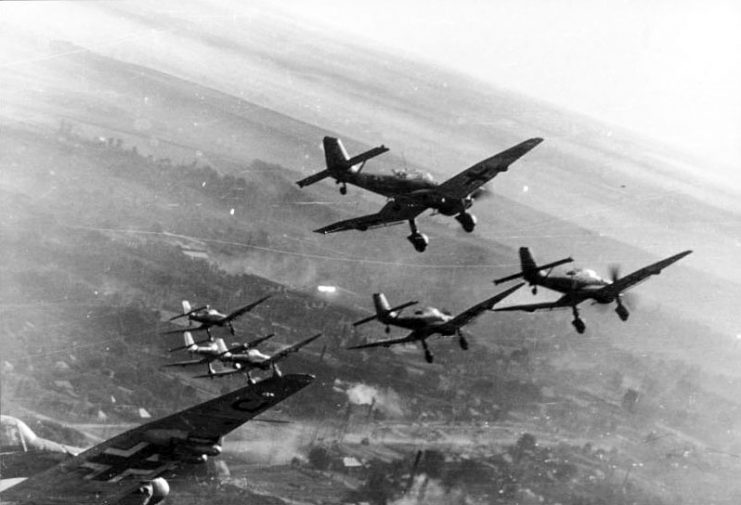
Rudel regularly flew three and more missions each day and he quickly proved to be utterly fearless. In July 1941, he was awarded the Iron Cross, 1st Class. In September of that year he was ordered to undertake a special operation.
The Soviet battleship Marat, a dreadnought from 1909 which had previously seen service in the Tsar’s navy as the Petropavlovsk, was providing long-range fire support to the Russian defenders of Leningrad from the Gulf of Finland. The Stukas of StG.2 were tasked with silencing the guns of the Marat.
On September 16, Rudel took part in an attack on the battleship while it was at sea. He ignored intense anti-aircraft fire to drop a single bomb on the vessel’s stern, causing serious damage.
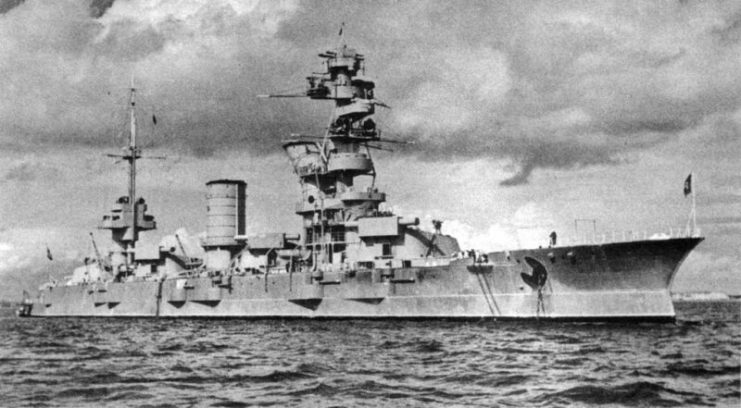
On September 23, 1941, a German reconnaissance aircraft reported that the Marat was in Kronstadt Harbor undergoing repairs. Rudel, equipped this time with a new, 1,000kg (2,204 lb) armor piercing bomb, attacked the ship again.
Ignoring the large number of anti-aircraft guns in the immediate area, Rudel dropped his single bomb from an altitude of just nine hundred feet, despite being warned that shrapnel from the bomb might reach as high as three thousand feet.
He pulled out at such a low level that his wheels skimmed the water. His bomb hit the ship’s ammunition stores, blowing the bow off. The Marat would never go to sea again.
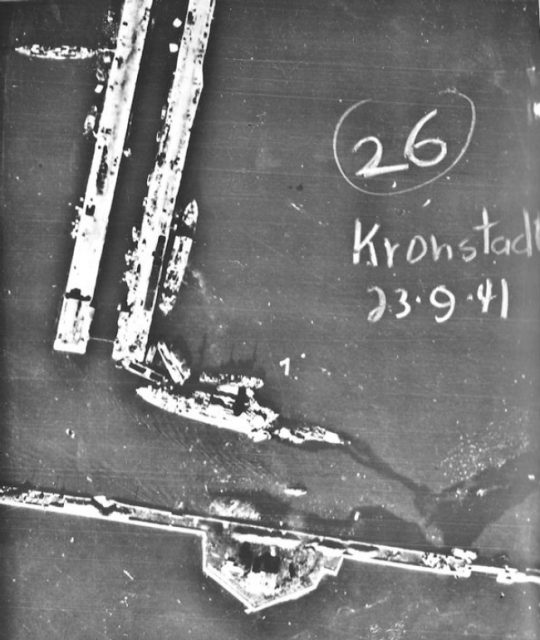
In October 1941, Rudel was awarded the Ehrenpokal der Luftwaffe (Honor Goblet of the Luftwaffe) for “Special Achievement in the Air War.” In the spring of 1942, having completed over five hundred combat missions and having been shot down more than once, Rudel was awarded the Knight’s Cross of the Iron Cross and posted as an instructor to a Stuka training unit in Germany.
By November he was back at the front where, after completing his 650th mission, he was admitted to the hospital with a serious case of jaundice. Hearing that his unit was in action against the Soviet defenders of Stalingrad, he discharged himself and returned to combat flying. He often undertook ten or more missions each day despite still being extremely ill.
After completing more than one thousand missions, Rudel was ordered to return to Germany to assist with the development of a new weapon designed specifically to destroy Soviet tanks. That was the Ju-87G, a Stuka equipped with two modified 37mm Flak 18 cannons mounted in under-wing pods.
The addition of these cannons made the cumbersome Stuka even slower. Additionally, each gun was provided with just twelve rounds of tungsten-carbide cored, armor piercing ammunition – but the new Kanonenvogel (“Cannon-bird”) proved lethal to Soviet armor in the hands of experienced pilots such as Rudel.
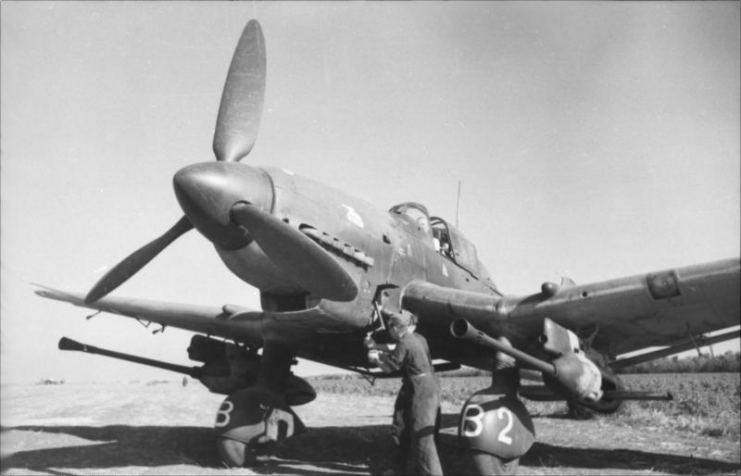
By April 1943, Rudel was back in action, using the Ju-87G to destroy Soviet tanks. He was awarded the Oak Leaves to his Knights Cross on April 14. In July he flew against the Soviets during the Battle of Kursk, the largest armored battle of WWII.
In the first day of the battle, Rudel personally destroyed twelve Soviet tanks. By November 1943 he had flown more than one thousand, five hundred missions and was credited with destroying more than one hundred Russian tanks. He was awarded the Swords to his Knights Cross on November 25.
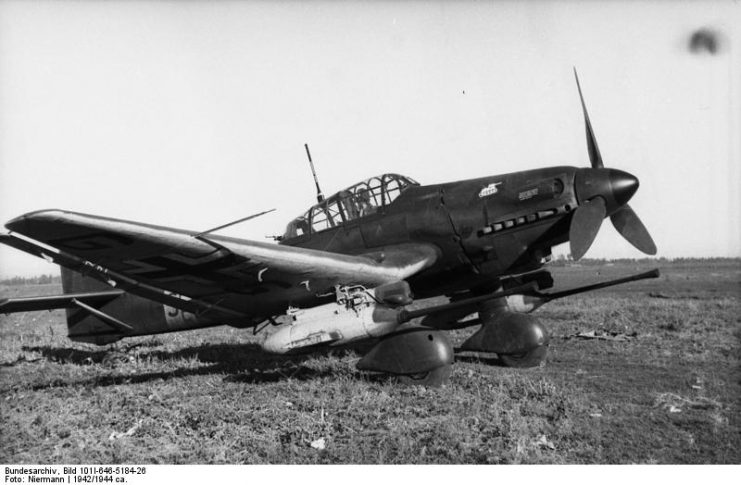
Rudel continued his relentless progress until, in March 1944, one of the other aircraft in a flight he was leading was forced to land behind enemy lines. Rudel landed his own aircraft to try to pick up the stranded crew, but his plane became bogged down.
Rudel, his gunner and the two crew from the other Stuka found themselves thirty miles behind enemy lines, in deep snow and bitter cold.
Undaunted, Rudel jogged back to German lines, swimming freezing rivers and making the last part of the journey barefoot and with a bullet wound in his shoulder. None of the others stranded with him made it back.
Rudel’s feet were so painful and swollen from the incident that he had to be carried to his aircraft, but he continued to fly combat missions. On one occasion he destroyed seventeen Soviet tanks in a single day.
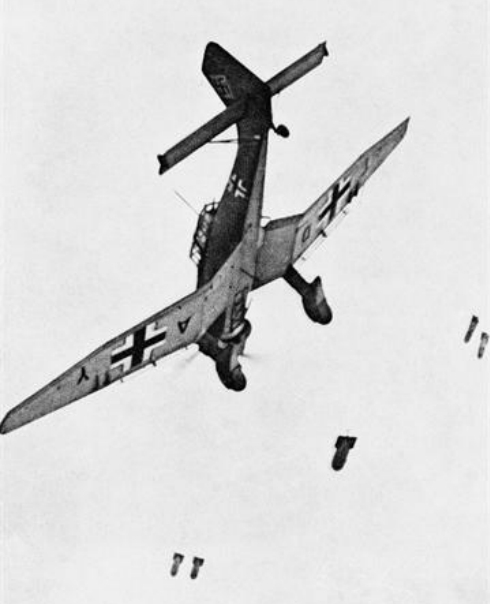
On March 29 he was awarded the Diamonds to his Knight’s Cross by Adolf Hitler, only the tenth soldier to receive what was Germany’s highest combat award. Hitler told Rudel that, due to his injuries, it was time to stop flying combat missions.
Rudel told the Fuhrer that, if he was not allowed to keep flying, he would not accept the award. Hitler relented, and Rudel was allowed to return to his unit.
By the end of 1944, he had flown over 2,400 combat missions and had personally destroyed four hundred and sixty Russian tanks – the equivalent of three full Soviet tank corps. Many of these missions were flown while he was wounded, for he was shot down by anti-aircraft fire several times.
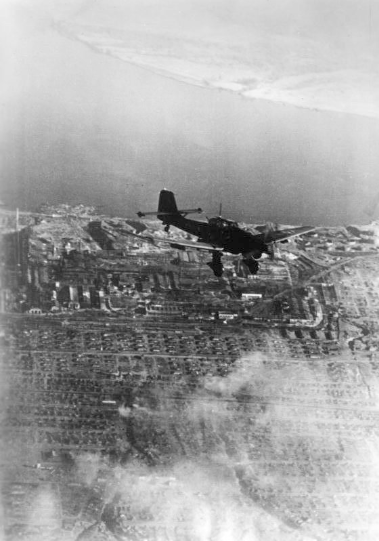
On January 1, 1945, he was called back to Berlin to receive another award. The problem was, he had already received the highest combat award. Therefore another was created especially for him: the Golden Oak Leaves to the Knights Cross.
Rudel was the only person ever to receive this award. Once again, Hitler ordered him out of combat after presenting him with the award. Once again, Rudel refused.
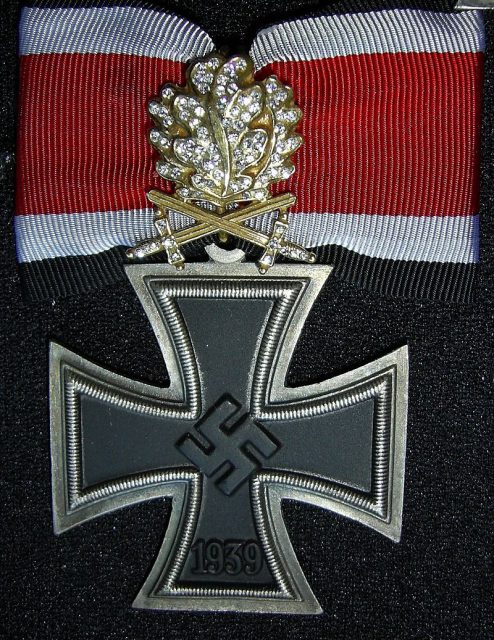
On February 8, on a mission over the Oder River and with his leg still in a cast from a previous wound which had smashed his thigh bone, Rudel’s Stuka was hit by Soviet anti-aircraft fire. With his leg virtually severed, Rudel somehow brought the aircraft down safely. When he later regained consciousness in a hospital, he found that the leg had been amputated.
Incredibly, he continued to fly in combat, though with an unhealed stump and having to be carried to his aircraft. When the war in Europe ended in May 1945, Rudel led his squadron to an American-held airfield, where they crash-landed their Stukas and surrendered.
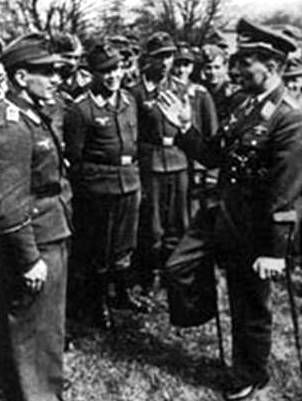
By this time, Rudel had flown over 2,500 combat missions, had destroyed more than five hundred Soviet tanks, and had shot down nine Soviet aircraft.
Immediately after the war he moved to Argentina where he was a supporter of the dictator Juan Perón before returning to Germany in the early 1950s. He remained a fanatical and unrepentant supporter of the Nazis and was involved with a number of neo-Nazi groups in Germany and elsewhere.
In 1958 his autobiography, Stuka Pilot, was published in English. While it provided details of his astounding combat career, the book also attempted to justify many German actions during the war.
For example, Rudel explained that the German invasion of the Soviet Union in 1941 was necessary because the Soviets were poised to attack Germany, something with which most historians absolutely disagree.
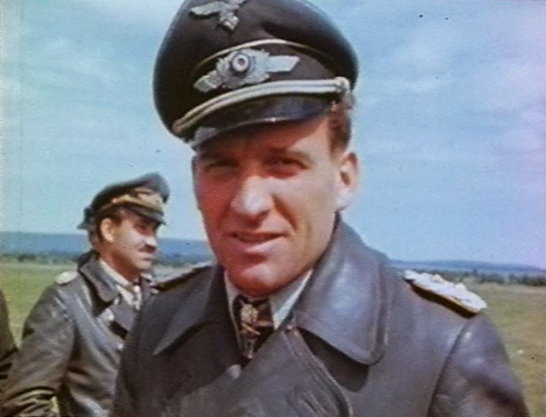
Rudel died in 1982 at the age of sixty-six, and he was buried in Dornhausen in Bavaria. Even his funeral caused controversy: some mourners gave Nazi salutes and a pair of F-4 Phantom’s of the German Bundeswehr made a low-altitude flyover during the service, though this was later claimed to have been entirely coincidental.
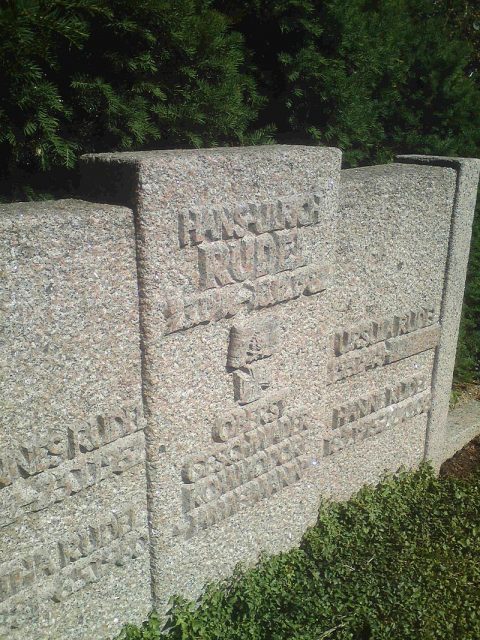
Read another story from us: Miracle Weapons: Hitler’s Jet Planes & Rockets to Save the Nazis
Rudel was a fanatical and outspoken Nazi, and there is no doubt that this endeared him to the Nazi leadership. This may also have ensured that he received attention and awards when other equally brave pilots who were less enthusiastic about the regime were passed over.
Regardless, his combat record is simply incredible. Hans-Ulrich Rudel was more than tough, and his determination to continue to fly and fight in the face of adversity and severe injury made him virtually unstoppable.
